
Why Does A Hot Pan Smoke While Cooking?
Fried food is a staple in almost every family's daily diet. They cook quickly and are enjoyed by adults and children alike. However, many of us struggle with the problem of too much smoke. Why does a frying pan smoke? How to avoid it? We tell you in this article.
Table Of Contents:
- What Does A Smoky Frying Pan Mean?
- Causes Of Smoke:
2.1. Before Cooking Begins.
2.2. During The Cooking Process.
- How To Correctly Prepare A Frying Pan For Use.
3.1 Cast-Iron.
3.2 Aluminium Frying Pan.
3.3 Steel.
3.4. Enamelled Non-Stick
4.Optimum Temperature For Frying.
- How To Get Rid Of Excess Moisture In Meat.
- Which Oil Is Better To Fry In And Why?
6.1 Sunflower Oil.
6.2. Butter.
6.3 Olive Oil.
- How To Cook Without Smoke.
- Fissman Non-Stick Products.
- Top Brand Models.
- Customer Reviews.
What Does It Mean When A Frying Pan Is Smoking?
Let's imagine a situation where a frying pan burns and smokes. It seems to happen exclusively during the frying process. A big fire, lots of oil, and meat or poultry only come out of the fridge. You put the ingredients on the heated griddle, and there it is, smoke. That's what happens, but it also happens the other way around - you put the pan on the gas, and it immediately starts to smoke. Why? Well, there are several reasons.
Causes Of Smoke Before You Start Cooking
1. Improper preparation of the griddle. New cookware is particularly prone to this problem. On specialist forums, it is often reported that a cast-iron frying pan is smoking. It's a misconception to think that the frying pan is ready to use immediately after purchase.
Depending on the material, it must first be prepared in a certain way. Uncoated pans generally require a first coat of protection to be applied by hand. This procedure is not difficult, but if it is not followed, the smoke will not be long in coming.
2. Incorrect care. Any frying pan needs to be cared for properly and with care. Not only to last longer but also to prevent smoke damage. Deep scratches and chips are the potential sources of the smoke. The housing is thinner, heats up more quickly, and can smoke.
3. Unsuitable oil. Not all oils are suitable for frying. Each kind has its own characteristics, among which the smoke control point is crucial. Oil not suitable for frying has a low smoke point and therefore smokes even without food.
Causes Of Smoke Formation During Frying
1. Cold cooking surface. No one wants to spend too much time cooking. Unfortunately, always in a hurry in the kitchen, the pan surface begins to smoke. Before it has time to heat up, it comes into contact with the ingredients in the dish, which almost always contain natural juices. The liquid leaks to the bottom and, when heated, turns to steam. So if your grill pan is smoking, it's often just cold.
2. Wet food. The problem has similar roots. It mainly affects cuts of meat and fish. To make them quick, they are thawed in water or out of the fridge just before cooking. Meat, poultry, and fish have a large supply of natural juices, and water only increases the amount. Even in a well-heated pan, this leads to smoke.
3. A damaged protective coating. Ceramic, stone, or enamel is applied to the metal body of the frying pan to solve several problems. To prevent food ingredients from sticking to the bottom or edges. It also reduces oil consumption, reducing the calorie content of the prepared food, making operation easier. In particular, to relieve the housewife from trouble with smoke. A badly damaged coating can no longer perform these functions.
How To Prepare A Frying Pan For Use
Every frying pan has to be prepared for use after purchase. Some pans must be cleaned from the factory grease and coated with a thin layer of cooking oil. Others need to be calcined - heat treated at a high temperature. Without this, their surface will not absorb the oil layer and will not acquire non-stick properties.
Uncoated cast iron pans should be rinsed thoroughly in warm water. Cast iron is not washable in the dishwasher. The material is brittle and can crack or rust from contact with aggressive household chemicals.
Dry the pan, put it on the fire, fill it with salt by 3 cm, and heat it for about 30 minutes. The material's pores are opened, the salt is poured off, and the cast iron is brushed with oil.
An uncoated aluminum frying pan is prepared in the same way. Due to the formation of a thin oxide film on the surface, the material does not rust. However, its high reactivity promotes the build-up of bacteria.
Fill the pan about halfway with water and add lemon juice. Bring the mixture to a boil and leave it to simmer for 20 minutes. After the liquid has been drained, the pan is rinsed and dried. As with cast iron, aluminum is salted and then oiled. In addition to vegetable oil, linseed oil is also suitable.
Steel frying pans burn only from improper use and cannot be blamed for being prone to rust. After purchase, take care to prepare the steel for use properly. This is not difficult. Rinse the container under the tap with a drop of mild detergent gel. Place it on the cooker, turning the heat up to medium. Oil the pan when all the factory-made grease has evaporated from the surface.
An enameled cast-iron frying pan also doesn't need to be glazed, just preheated. It has an enamel coating on top - a protective layer that resembles melted glass. This layer fills the material's pores evenly and protects it from burning. Wash the frying pan, dry it and grease it with oil and preheat it.
A non-stick pan is by far the easiest to prepare. After washing, it should be heated to about 200 degrees and oiled.
The frying pans are not only heated and salted. Find more information about the different methods here.
What Is The Optimum Temperature For Frying The Widest Variety Of Food?
|
Ingredient |
Recommended temperature |
|
Meat |
70-150 degrees |
|
Fish |
70-150 degrees |
|
Poultry |
70-150 degrees |
|
Potatoes |
110 degrees |
|
Vegetables |
110 degrees |
|
Mushrooms |
110 degrees |
It is important to know that mushrooms have a lot of water in them, so it is a good idea to fry them at a high temperature. When the liquid has evaporated, lower the heat. The frying temperature at which meat protein retains its maximum usefulness is 70-80 degrees Celsius. The golden crust is obtained at higher frying temperatures (up to 150 degrees). And the meat gets rid of moisture already at 40 degrees. However, the meat should be dried as much as possible before roasting.

How To Get Rid Of Excess Moisture In Meat Products
1. Defrost in advance. Take meat, fish, and chicken that you plan to cook the next day out of the freezer the day before.
2. Allow any excess water to drain off. Defrost the food in a colander. Take them out of their packaging, and remove the bags and foil.
3. Blot with a paper towel. When frying meat steaks, use only pieces at room temperature. Dry each one with a napkin or paper towel before sending it to the pan.
What Oil To Fry In And Why
As mentioned above, each type of oil has its own composition and smoke point. The temperature point at which the oil smokes, and you can see it. It is important to know that oils with a high smoke point are suitable for frying.
Where does it come from, anyway? When heated, the sugars and amino acids contained in foods react. For example, fats (including those in butter) turn into aldehydes. At first, this gives off a pleasant aroma but produces smoke and even soot when overheating.
1. Sunflower oil. It comes in two varieties - refined (purified) and unrefined (crude). The unrefined sunflower oil has a tangible, oily smell. Frying in it is not recommended. It contains a lot of organic substances that break down as a result of heat. They start to smoke at around 107 degrees Celsius, but refined oil can only be smoked at 227 degrees. It's perfect for frying.
2. Butter. High in saturated fat (approx. 70 %). It has a smoke point of 150 degrees but is not suitable for frying. The burning proteins smell bad, and the butter darkens quickly.
3. Olive oil. Globally, it is regarded as the healthiest, but only in the case of salads. Olive oil and its refined variety Olive Oil (Refined) are only one type suitable for frying. It is a combination of straight or cold-pressed oils. The composition and smell are poor, but the smoke point is between 160 and 210 degrees.
How To Cook Without Smoke
1. Prepare the container for use in the recommended manner. Wash coated pans thoroughly, preheat and oil them. Uncoated frying pans are salted, and the first coat of protection is applied by hand.
2. Preheat the body for 20-40 seconds. This is sufficient time to heat up fully for stainless steel, cast iron, and aluminum. Especially if the containers are reinforced with a ferromagnetic insert in the bottom.
3. Use oil suitable for frying. Do not cook with salad oil or butter oil. They have a low smoke point. They burn quickly, turning dark and releasing large quantities of smoke.
4. Fry on low to medium heat. This ensures that the ingredients do not overheat and burn. The lack of temperature often leads to smoke.
5. Add minimal oil. Firstly, this prevents you from adding extra calories to your future meal. Secondly, you avoid the possibility of smoke formation due to the excessive amount of fat boiling in the pan.
6. Do not reuse the oil. Change it after each cooking session. Rinse thoroughly from the surface of the pan. Refined oil is most preferred.
7. Do not overcook. Burnt bits of food are a potential source of smoke. Grill meat, vegetables, and mushrooms until cooked through and nicely browned. Do not brown them until they are black.
8. Use a non-sharp spatula. This will help preserve the protective coating, prolonging the container's life. Damaged areas will not perform their intended protection function and may produce smoke.
9. Wash when the pan has cooled down. Not only that, but you'll save your hands from getting accidentally burned. This protects the coating from temperature shock. It leads to micro-cracks, and those lead to smoke.
10. Store in an empty container. The edges of pans placed one inside the other scratch the body of the pan from the inside. Over time, this increases the natural wear and tear of the product. Damaged frying pans smoke more often.
Fissman Non-Stick Products
Classic frying pans can be safe and comfortable to use if they are made from the best raw materials and to the highest standards. This is exactly what FISSMAN specializes in. The brand's non-stick frying pan is a worthy example of modern non-stick cookware. It has a strong molded or pressed body, a ferromagnetic base, a heat-resistant bakelite handle, and a protective coating made of natural components. These cookware does not need complicated care. It won't burn, meaning no frying smoke.
Top Brand Models
|
Model |
Description |
|
- Frying pan; - Aluminium body; - 28 cm diameter; - Bakelite handle; - Induction bottom; - Non-stick coating TiPro. |
|
|
- Braising pan; - Aluminium body; - 28 cm diameter - Bakelite handle; - Induction bottom; - XylanPlus non-stick coating. |
|
|
REBUSTO |
- Grill pan; - Aluminium body; - 28 cm diameter - Removable bakelite handle; - Induction bottom; - Two side openings for fat drainage; - Platinum non-stick coating. |
|
MALACHITE |
- Wok; - Aluminium body; - 30 cm diameter - Two Bakelite handles; - Induction bottom; - Lid made of heat-resistant glass; - EcoStone non-stick coating. |
|
PROMO |
- Frying pan; - Aluminum body; - 18 cm diameter - Bakelite handle; - Induction bottom; - TouchStone non-stick coating. |
|
NOMADA |
- Saucepan; - Light-weight cast-iron body; - 28 cm diameter - Two cast-iron handles; - Induction bottom; - Lid made of heat-resistant glass; - XylanPlus non-stick coating. |
|
DIAMOND |
- Stone coated frying pan; - Aluminium body; - 24 cm diameter - Bakelite handle; - Induction bottom; - Greblon C3+ non-stick coating. |
|
LA GRANITE |
- Ceramic coated frying pan; - Aluminium body; - 26 cm diameter - Removable bakelite handle; - Induction bottom; - TouchStone non-stick coating. |
|
Square grill pan |
- Cast-iron enameled frying pan; - 28 cm diameter; - wood handle; - Induction base; - Two side draining spouts; - Coating: colored enamel on the outside, transparent enamel on the inside. |
|
MELITA |
- Light frying pan made of cast iron; - 30 cm diameter - Two stainless steel handles; - Induction bottom; - Lid made of heat-resistant glass; - XylanPlus non-stick coating. |
|
SEAGREEN |
- Light-weight cast-iron frying pan; - 28 cm diameter - Wood handle; - Induction bottom; - XylanPlus non-stick coating. |
|
STEEL PRO |
- Non-stick steel frying pan; - 28 cm diameter - Bakelite handle; - Induction bottom; - XylanPlus non-stick coating. |
|
Classic round frying pan |
- Enamelled cast-iron frying pan; - 26 cm diameter - Two cast-iron handles; - Induction bottom; - Two pour spouts; - Coating: colored enamel on the outside, transparent enamel on the inside. |
Customer Reviews
"I liked it. Not heavy, although the walls are thick, which is a plus. Keeps heat for a long time. For frying is ideal, non-stick. For braising, high sides."
"Favourite pan, handle removable, deep, non-stick, not heavy, but the bottom is also thick, no food burns. Perfect for frying and braising, thanks to the shop consultant."
"Handy removable handle. Can be put in oven and convector."
"Liked this wok, deep and roomy, compatible with all types of cookers, has a heavy-duty non-stick coating, feel the firm's quality. The green color awakens the appetite and desire to cook."
"Very cool pan, beautiful and quality, was looking for a small size, fully met expectations, pancakes do not stick. Side to side 18cm, inside 16cm. I would definitely recommend it.
"Thick walls, thick bottom, heavy and fundamental saucepan. The lid fits tightly. Distributes the heat evenly, perfect for slow braising meat and vegetables, nothing burns or sticks. The food is different, delicious, and, most importantly, healthy.
"The food doesn't burn, which is the biggest plus, even with minimal use of oil, and this also makes the dishes less calorie-dense. Comfortable non-heating handle, it doesn't slip at all. I'm also pleased that this frying pan heats up quickly and is not heavy."
"Great frying pan for the family."
"My expectations of the purchase have been met. This frying pan is cast iron, but it is not heavy. It is easy to use, embossed, requires little oil, and fries everything with a delicious crust. It also heats quickly and has two handles and a practical lid.
Go to our online shop to see our brand's full range of frying pan
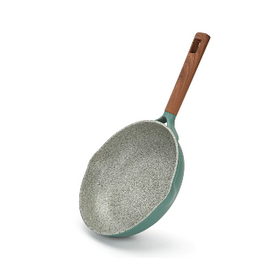
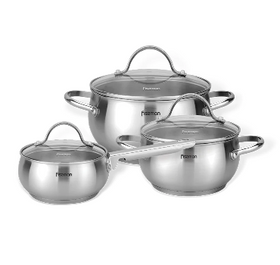
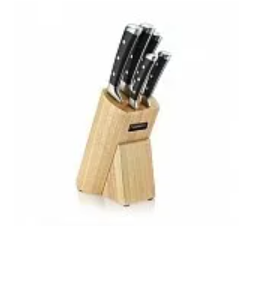
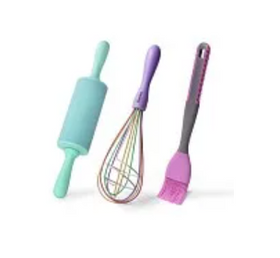

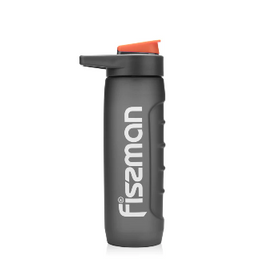
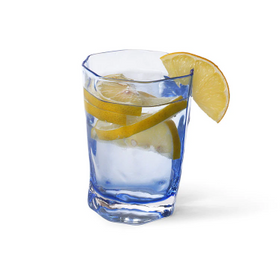





























Leave a comment